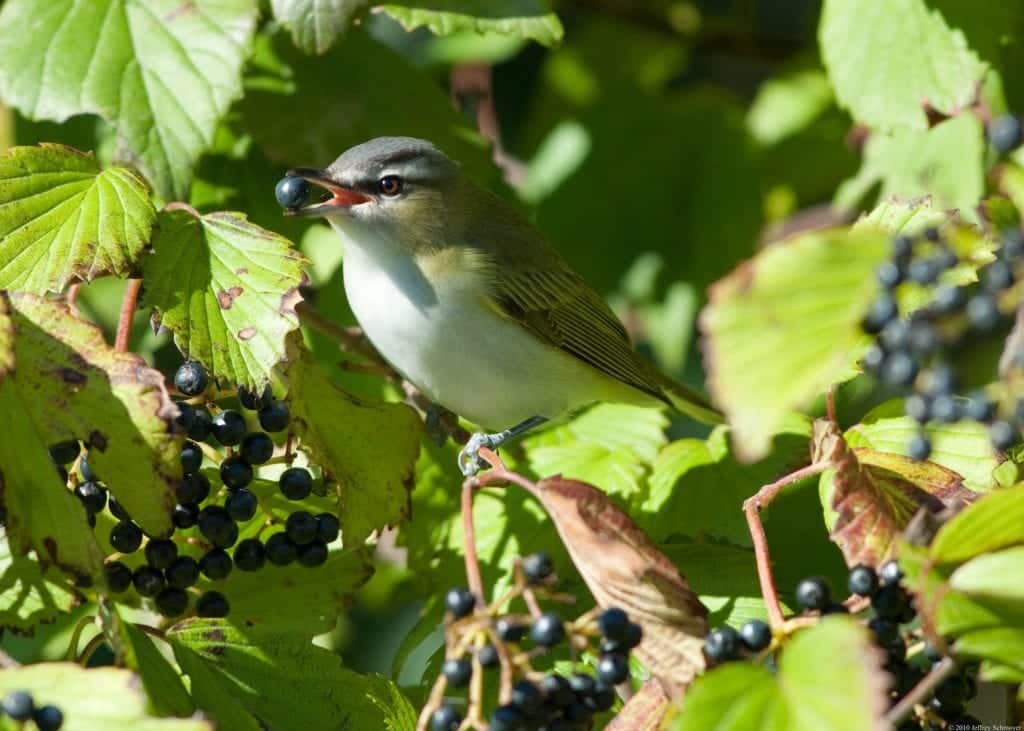
Here I am! Where are you? Way up here! In the tree! So goes the song of the Red-eyed Vireo, heard in nearly every forested area between Kittery and Fort Kent from May until early autumn. True neotropical migrants, Red-eyed Vireos spend the nonbreeding season in the Amazon Basin, especially in Colombia, Brasil, Venezuela, Ecuador, and Peru. Most depart South America during April, and over the course of a few weeks or a month, make their way up through Central America and the southeastern US, migrating on clear nights and refueling during the day by feasting on the abundance of newly-emerged insects. The first males can reach Maine by the first week of May, but the majority arrive in the second and third weeks, just in time for the emergence of leaves and insects in the canopy of our forests.
These canopy-dwellers are heard far more often than they are seen, and possess a huge vocal repertoire, combining various “syllables” into “phrases” that don’t repeat. In fact, there is often no similarity between the songs of males whose territories are right next to each other. While the males generally sing from treetops, Red-eyed Vireos forage and nest in the mid- and understory, and require forest habitat with layers of native shrubs and small trees. Their nests are usually built at these lower levels, with layers of foliage above to hide the nest from predators. They raise their young on insects, especially caterpillars and other larvae, before eating increasing amounts of fruit later in the summer, which they subsist on throughout the nonbreeding season. The return of Red-eyed Vireos to their breeding territories in Maine is a yearly reminder that conserving healthy forest ecosystems is important not only here at home, but also in the neotropical forests where they spend the rest of their lives.
Backyard Bird of the Month is a feature by Maine Audubon created for the Maine Home Garden News, the newsletter of the University of Maine Cooperative Extension: Garden and Yard
Photo: Jeff Schmoyer, used with permission
